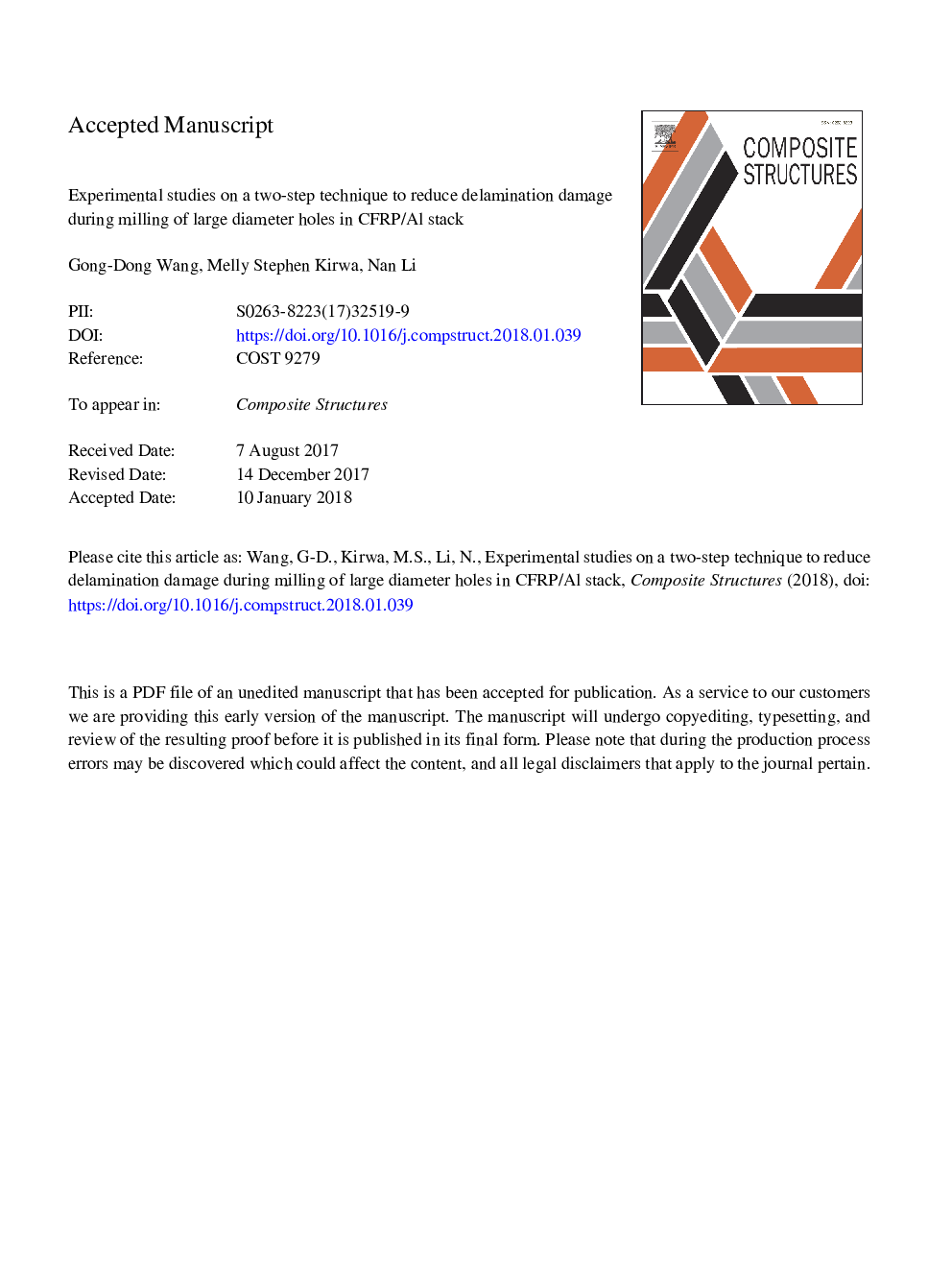| Article ID | Journal | Published Year | Pages | File Type |
|---|---|---|---|---|
| 6704107 | Composite Structures | 2018 | 20 Pages |
Abstract
Non-conventional hole-making machining processes are being adopted to manufacture holes in the difficult to cut materials like carbon fiber reinforced polymer (CFRP) composites. Of the many non-conventional processes, helical milling remains the most favorable and the best alternative to conventional drilling. It possesses several advantages including low cutting forces, reduced tool wear and improved hole quality. The use of composites in conjunction with metals is very common in aerospace industry and the most common configurations are CFRP/Al and CFRP/Ti-6Al-4V. In this work, a two step process for helical milling in CFRP/Al stack is proposed and experimented then the results are compared with that of conventional drilling. In the first step, milling is done on the CFRP/Al stack starting on the composite part then the workpiece is flipped so that in the second step milling starts on the metal part. Results show that helical milling reduces axial forces by about 35% compared to that of conventional drilling. The forces involved in the second step were found to be about 25% less than that of the first step in the helical milling process. Reduction in forces consequently leads to less damage as scanning electron microscope (SEM) images of the machined holes show.
Keywords
Related Topics
Physical Sciences and Engineering
Engineering
Civil and Structural Engineering
Authors
Gong-Dong Wang, Melly Stephen Kirwa, Nan Li,
